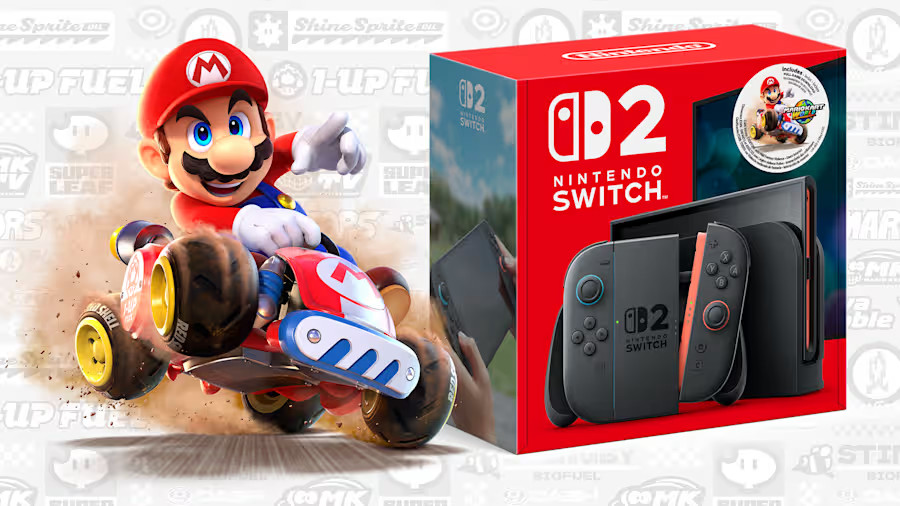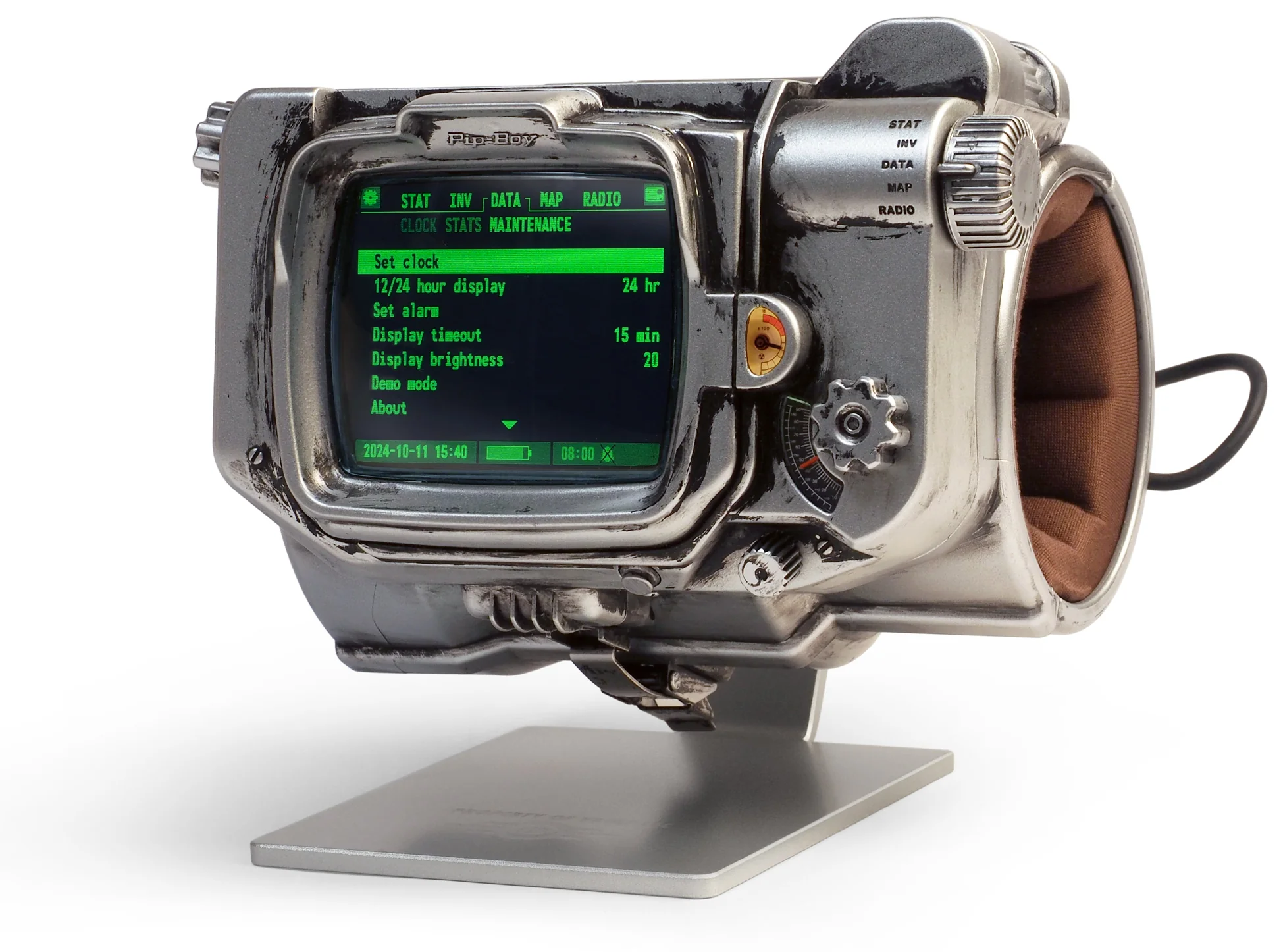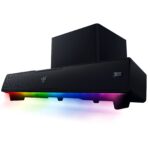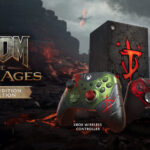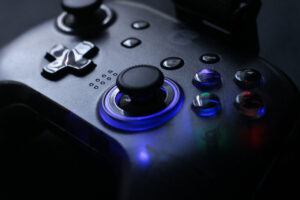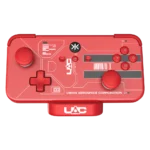- Gaming
- GamingGaming reviews, news and comparisons.
- PlayStation
- XBoxXBox news, reviews and more.
- Nintendo Switch 2Nintendo Switch 2 news, reviews and more.
- Collectors EditionsCollectors edition news, reviews and more.
- ControllersController news, reviews and more.
- Handhelds
- Audio
- HeadphonesHeadphone news, reviews and more.
- PC SpeakersPC Speaker news, reviews and more.
- SoundbarsSoundbar news, reviews and more.
- Smartphones
- Tablets
- PC’sPC reviews, news and comparisons.
- PC’sPC reviews, news and comparisons.
- Monitors
- Graphics CardsGraphics Card news, reviews and more.
- KeyboardsKeyboard news, reviews and more.
- Mice
- Laptops
- Streaming
- WearablesWearable reviews, news and comparisons.
- Cameras
- CollectibleFigure news, reviews and more.
- Shop
- Gaming
- GamingGaming reviews, news and comparisons.
- PlayStation
- XBoxXBox news, reviews and more.
- Nintendo Switch 2Nintendo Switch 2 news, reviews and more.
- Collectors EditionsCollectors edition news, reviews and more.
- ControllersController news, reviews and more.
- Handhelds
- Audio
- HeadphonesHeadphone news, reviews and more.
- PC SpeakersPC Speaker news, reviews and more.
- SoundbarsSoundbar news, reviews and more.
- Smartphones
- Tablets
- PC’sPC reviews, news and comparisons.
- PC’sPC reviews, news and comparisons.
- Monitors
- Graphics CardsGraphics Card news, reviews and more.
- KeyboardsKeyboard news, reviews and more.
- Mice
- Laptops
- Streaming
- WearablesWearable reviews, news and comparisons.
- Cameras
- CollectibleFigure news, reviews and more.
- Shop
Now Reading: Nintendo Switch 2 Backwards Compatibility
-
01
Nintendo Switch 2 Backwards Compatibility
- Gaming//
- Gaming//Gaming reviews, news and comparisons.
- PlayStation//
- XBox//XBox news, reviews and more.
- Nintendo Switch 2//Nintendo Switch 2 news, reviews and more.
- Collectors Editions//Collectors edition news, reviews and more.
- Controllers//Controller news, reviews and more.
- Handhelds//
- Audio//
- Headphones//Headphone news, reviews and more.
- PC Speakers//PC Speaker news, reviews and more.
- Soundbars//Soundbar news, reviews and more.
- Smartphones//
- Tablets//
- PC’s//PC reviews, news and comparisons.
- PC’s//PC reviews, news and comparisons.
- Monitors//
- Graphics Cards//Graphics Card news, reviews and more.
- Keyboards//Keyboard news, reviews and more.
- Mice//
- Laptops//
- Streaming//
- Wearables//Wearable reviews, news and comparisons.
- Cameras//
- Collectible//Figure news, reviews and more.
- Figures//Figure news, reviews and more.
- Replicas//Replica news, reviews and more.
- Shop//
- Home
- Gaming
- Nintendo Switch 2
- Nintendo Switch 2 Backwards Compatibility
Nintendo Switch 2 Backwards Compatibility
Tommy CNintendo Switch 21 week ago230 Views

The Nintendo Switch 2, officially revealed by Nintendo, includes backwards compatibility with most original Nintendo Switch games, allowing players to enjoy their existing libraries on the new console. This feature supports both physical cartridges and digital titles purchased through the Nintendo eShop, ensuring flexibility for users. However, there are some important details and limitations to understand.
Nintendo has confirmed that the Switch 2 will play “Nintendo Switch 2 exclusive games, as well as Nintendo Switch games,” but with a caveat: not all original Switch games will be fully supported or compatible. This is due to differences in hardware between the two systems. Unlike previous Nintendo consoles like the Wii U or 3DS, which often included legacy hardware for compatibility, the Switch 2 doesn’t rely solely on hardware from the original Switch. Instead, it uses a hybrid approach—combining elements of software emulation and hardware compatibility—to translate original Switch game data into a format the Switch 2 can process in real-time. This method avoids the battery drain of full software emulation while still enabling backwards compatibility.
For physical games, the Switch 2 accepts original Switch cartridges, suggesting the cartridge slot remains compatible. Digital games tied to your Nintendo Account can also be transferred or re-downloaded, and the Nintendo Switch Online service will carry over, preserving access to retro games and online features. A new feature called “Virtual Game Cards,” introduced in a March 2025 Nintendo Direct, will launch in late April 2025 for the original Switch and be available on the Switch 2 at its release. This allows users to manage and transfer digital games across consoles or even share them within a family group account.
However, some games may not work due to specific hardware dependencies. For example, titles like Nintendo Labo Toy-Con 04: VR Kit are confirmed incompatible because the Switch 2 can’t fit into the VR Goggles accessory. Games relying on the original Joy-Con’s IR Motion Camera or specific gyro controls—like Ring Fit Adventure or 1-2-Switch—may require original Switch Joy-Cons, as the new Joy-Con 2 controllers lack certain features (e.g., the IR sensor) and differ in size or functionality. Original Joy-Cons can be paired wirelessly with the Switch 2 to play these games, though they’ll need a separate charging method since the Switch 2 can’t charge them directly.
Nintendo has tested compatibility extensively, reporting that 99% of its first-party titles (122 tested as of April 1, 2025) work on the Switch 2, with the exception of the VR Labo kit. For third-party games, with over 10,000 titles in the Switch library, some face issues: around 40 have start-up problems (e.g., Doom Eternal, NBA 2K25), and about 20 have in-game compatibility issues (e.g., Fall Guys, Alan Wake: Remastered). These are being investigated, with updates planned—potentially by late April 2025—to improve compatibility before the Switch 2’s June 5, 2025 launch.
Additionally, some original Switch games will benefit from the Switch 2’s enhanced hardware. Select titles, like The Legend of Zelda: Breath of the Wild and Mario Party Jamboree, will offer paid “Switch 2 Edition” upgrades with new content or features. Others, such as New Super Mario Bros. U Deluxe, will receive free updates for better performance (e.g., higher resolution, smoother frame rates), though specifics vary by game. Nintendo aims to leverage the Switch 2’s power—comparable to a mid-tier PC with a 120Hz display and 4K docked output—to enhance the experience where possible.
In summary, the Switch 2’s backwards compatibility is robust but not universal. Most of your Switch games will work, especially major titles, but some may require workarounds (like using original Joy-Cons) or face temporary issues until patches are released. Nintendo’s ongoing efforts with developers suggest the compatibility list will grow closer to launch.













